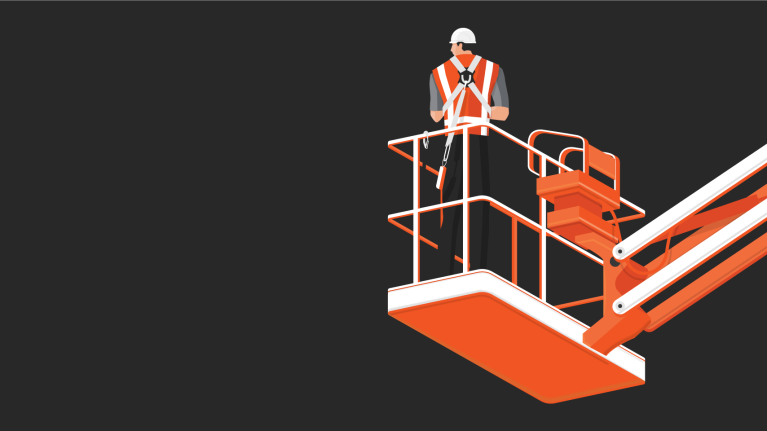
Article
Construction Incident Report

Let’s face it, accidents happen, and even best-laid plans can go wrong. As the construction industry continues evolving rapidly to build faster than ever before, incidents can still occur on the most proactive of job sites.
While you can’t always prevent accidents from happening, you can arm yourself with the tools to respond quickly and thoroughly when they do. A watertight construction incident report is essential so that you can identify future risks and develop better safety procedures.
Chapter 1
The Importance Of Getting Your Construction Incident Report Correct
Responding to an incident on the job site can seem daunting. However, properly documenting the incident—even in a stressful environment—is critical. Doing so can keep projects on track, mitigate risk and demonstrate your company’s commitment to keeping your workers healthy and safe. Over the years, there has been a rise in the awareness and tracking of incident rates as a powerful metric to benchmark a company’s safety performance. In fact, poor rates can lead to more surprise OSHA inspections and higher insurance premiums. It pays to be safe.
Chapter 2
Types of Construction Site Incidents
It’s no secret that construction can be dangerous. Working on a job site carries inherent risk due to the sheer volume of potential dangers present at all times. According to the National Safety Council and OSHA, in the U.S., a worker is injured on the job every seven seconds, and construction’s “Fatal Four”—falls, struck by object, electrocution and caught-in/between—accounted for more than half of construction worker deaths in 2018. Keep reading to learn more about some common buckets that construction site accidents can fall under.
Serious/Catastrophic Events
An unexpected accident that results in death, permanent harm, severe, temporary harm, psychological injury, or the risk thereof, is considered a serious/catastrophic event. Typical examples of such injuries include the “Fatal Four” mentioned above as well as a scaffolding collapse that results in hospitalisation, the loss of a limb or loss of motor function.
First Aid-Only Events
Minor cuts, scrapes, burns or injuries that happen on the job that don’t require a trip to the doctor fall into the bucket of first aid-only events. In other words, health and safety services are administered on the job site.
Medical-Only Events
A medical-only event is when someone seeks medical treatment beyond first aid, but it does not result in hospitalisation, lost time from work, or permanent injury. For instance, going to the doctor to see if you need stitches but being told they’re not necessary.
Recordable Events
Recordable events can be those that result in death, days away from work, restricted work, transfer to another job, medical treatment beyond first aid, or loss of consciousness. Injuries and illnesses include any work-related diagnosed case of cancer, chronic irreversible diseases, fractured or cracked bones or teeth, or punctured eardrums.
Report-Only Events
According to OSHA and the NSC, near misses are a common type of report-only event—they could have led to bodily harm and/or property loss but didn’t (for instance, if a hammer falls from scaffolding and nearly hits someone on the head). Near miss incidents often precede loss producing events, but they may be overlooked since there was no harm at the time.
Lost Time Events
A lost time event is when an occupational injury or illness prevents someone from being able to work their normal shifts. An example is someone who shatters their ankle after falling off a ladder and can’t return to work for a month.
Chapter 3
Construction Incident Report Templates
The primary purpose of a construction incident report is to uncover the circumstances and conditions that led to an event to help prevent similar future incidents in the future. Depending on the severity of the incident, the report may be circulated within the company or externally to insurers, regulatory bodies and possibly others. Properly evaluating and selecting the right form will make all the difference from the get-go and ensure all critical information is included.
OSHA has an Injury and Illness Report form (OSHA Form 301), but other templates can also be used as long as they include all the information required in Form 301, including:
The how, where, when, and whom.
Description of incident.
Findings.
Corrective actions and improvements.
Conclusion.
Appendix - attachments, witness/team statements, notes, photos, sketches, etc.
Chapter 4
Conclusion
The construction incident report is a key part of any successful workplace safety programme. Safety programmes can decrease the likelihood of an injury by half, lower EMR to save you money and empower employees to become safety champions.
Numerous studies have shown that companies with a strong safety culture typically experience fewer at-risk behaviours, decreased incident rates, low turnover, less absenteeism and boosted productivity—a win-win for all.
Procore’s mobile-friendly Incidents Tool is based around OSHA’s 300, 300A, and 301 Form requirements and makes documenting incidents approachable and intuitive. With it, you can contribute to a safer environment and gather the information necessary to educate, focus resources and prevent similar incidents from happening in the future. To learn more about the Incidents Tool and the suite of game-changing quality and safety products we offer, go to procore.com/en-gb/quality-safety.
